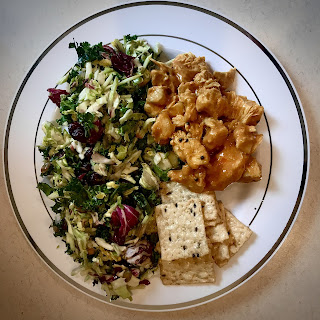Food Choice- Taste
There is a lot of misinformation about fat. The first common misconception is that eating fat, makes you fat. This is incorrect. Eating more calories than you burn is what causes weight gain. So while a food may be considered “fat free”, it may have a ton of sugar which can cause an overconsumption of calories. Swedish Fish for example, are considered fat free. However, one serving of the normal version (about 30 g or 5 pieces), is 110 calories and has 23 g of added (refined) sugar. Compare this to avocados (a fatty food), where 30g is about 48 calories.
All fat as been generalize to be bad. This is also misinformation. Oils are essential to several functions of the human body. There’s also different kinds of oils/fats. There are polyunsaturated and monounsaturated oils, which have good fats, or good cholesterol. There are also saturated and trans fats that are bad oils or bad cholesterol. You’re body has a certain amount of total cholesterol, the ratio is what’s important. You want as little of the bad cholesterol as possible as that is what bunches up in arteries causing heart disease and as much of the good cholesterol as possible, as it flows nicely through the blood stream and helps the human body function. Examples of good fats are nuts, olives, most fish, and avocados. Examples of bad fats are butter, shortening, coconut oil, and hydrogenated vegetable oils.
Why even eat fats? Healthy oils help with nerve/brain communication, which can mean lower inflammation and better heart function. They also help with the absorption of essential vitamins. Additionally, they are appealing to the palate and help the body to become satiated faster and for longer.
What does this have to do with taste? If a food does not satiate someone after eating, they’re most likely either not going to stick with the new diet or eat more food most likely causing weight gain. Since our bodies have evolved to desire fat (fat provides 9 calories of energy for every gram consumed while carbs and sugar provide about 4 calories of energy per gram consumed) due to it providing more energy for lower amount of food consumed, the body naturally enjoys the smell and taste of fat. This means someone who eats a salad only of romaine lettuce will most likely not enjoy the taste and smell of their food as opposed to a person who has a salad with either olives, nuts, or olive oil. Fats also help the brain register as full, for longer. So the person who ate the romaine lettuce with the healthy fat will feel fuller longer than the person who only had romaine lettuce (we will talk more about what makes a good salad in another post).
Essentially, one way to help transition to a healthier diet is to limit bad fats (fast food, chips, candy, etc) and increase good fats (nuts, fish, olives, most vegetable oils). This will help the body feel fuller, reduce the chances of a clogged heart, improve body functions (including nerve communication and vitamin absorption), and taste better than cutting fat all together.


Comments
Post a Comment